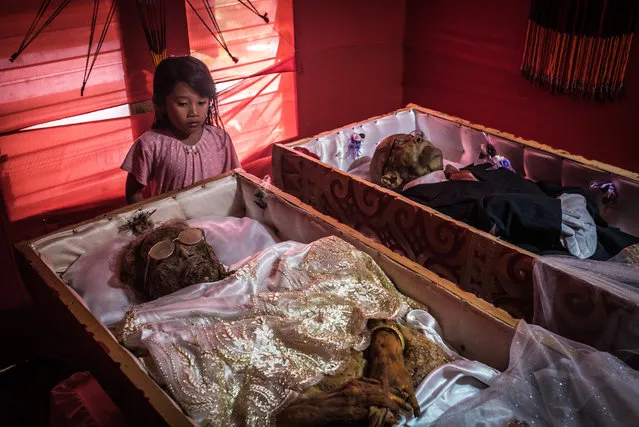
For the Torajan people of Indonesia, death is part of a spiritual journey: families keep the mummified remains of their deceased relatives in their homes for years – and traditionally invite them to join for lunch on a daily basis – before they are eventually buried. Even then, they are regularly exhumed to be cleaned and cared for. In contrast to Western norms, Torajans people, who live in the mountains of Sulawesi in Indonesia, treat their beloved relatives as if they are sick not dead. In this picture, a grandchild stands next to her deceased grandparents. Yohanis (right), was 77 years old and passed away two weeks ago; his wife Alfrida Tottong Tikupadang (left), was 65 years old and passed away five years ago. In Toraja, it is customary to feed the deceased every day and to keep the corpses cozily bedded in a separate room of the family house until the family can afford a proper funeral. (Photo by Claudio Sieber Photography/The Guardian)
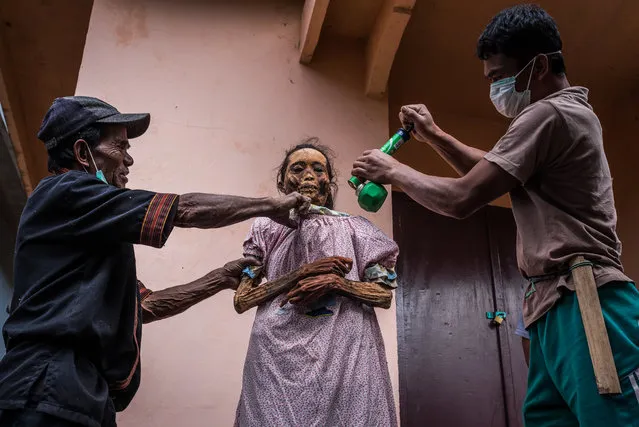
After the funeral rites of “Rambu Solo”, the deceased are finally buried in tombs. But still they are regularly visited, cleaned and given new clothes in a ritual known as Ma’nene (“Care of Ancestors”). Datu died 35 years ago. In this picture relatives are removing the insects that covered her. (Photo by Claudio Sieber Photography/The Guardian)
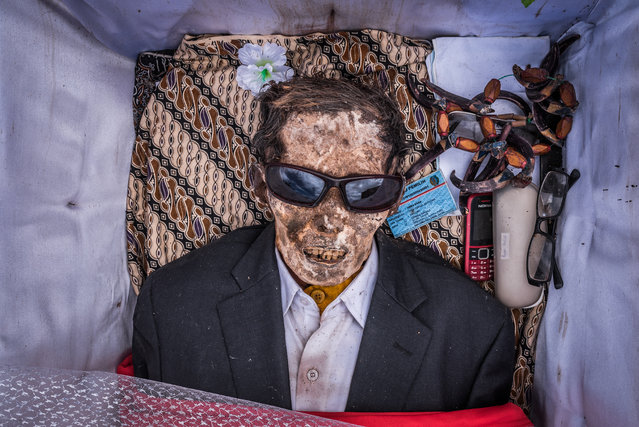
It’s customary for the Torajans to put gifts in the coffin, such as a bracelet or a watch. Others might even bury a diamond with their loved ones. Grave robbery often occurs and some Torajans keep their gifts a secret. Grandpa Ne Pua passed away when he was 85 years old. He has been buried in his favourite suit together with his favourite belongings. (Photo by Claudio Sieber Photography/The Guardian)
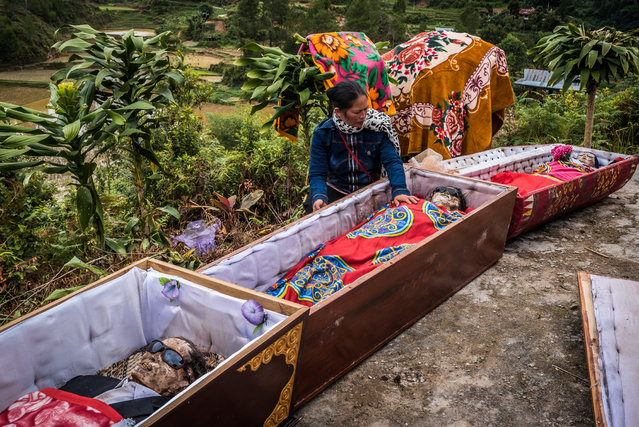
Roughly 50 bodies are being moved from Balle graveyard to a new mausoleum. As soon as the traditional coffins are dragged out of the tomb, the relatives put on surgical masks and attend to their loved ones. (Photo by Claudio Sieber Photography/The Guardian)
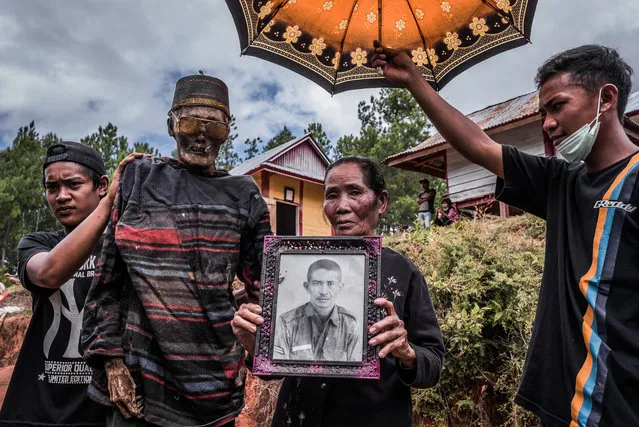
In this picture, a family presents Djim Sambara, who died two years ago when aged 90. Sambara was honourably buried in his military uniform before the family changed his outfit. (Photo by Claudio Sieber Photography/The Guardian)
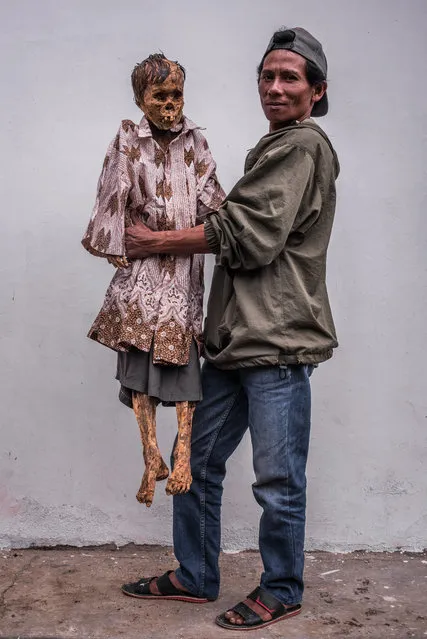
Andaris Palulun is given new clothes by his brother Ferri before returning to the family tomb. He died 20 years ago. (Photo by Claudio Sieber Photography/The Guardian)
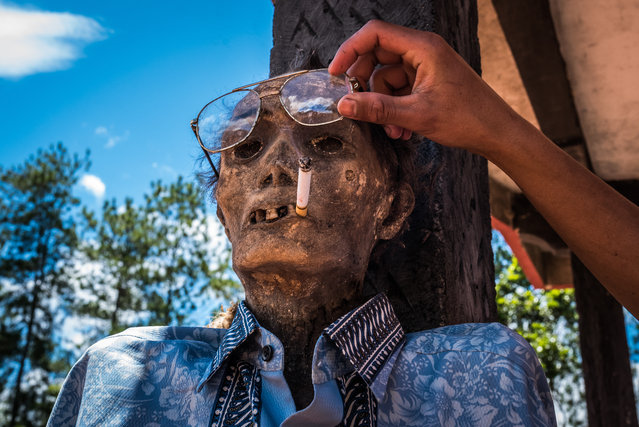
Todeng died in 2009. A young relative of his, Sam, lights him a cigarette and changes his glasses. (Photo by Claudio Sieber Photography/The Guardian)
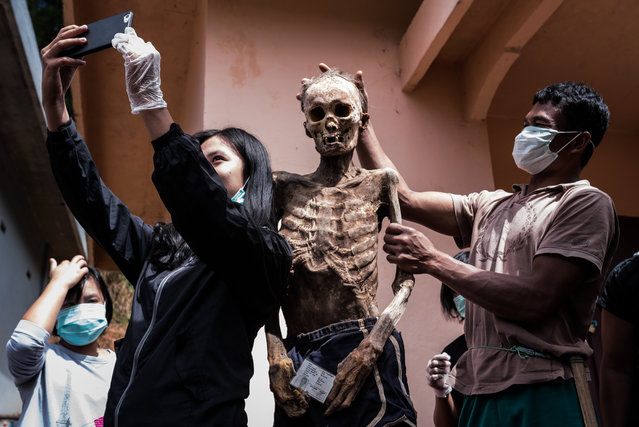
Yuanita takes a selfie with her relative Allo Pongsitammu who passed away roughly 20 years ago. (Photo by Claudio Sieber Photography/The Guardian)
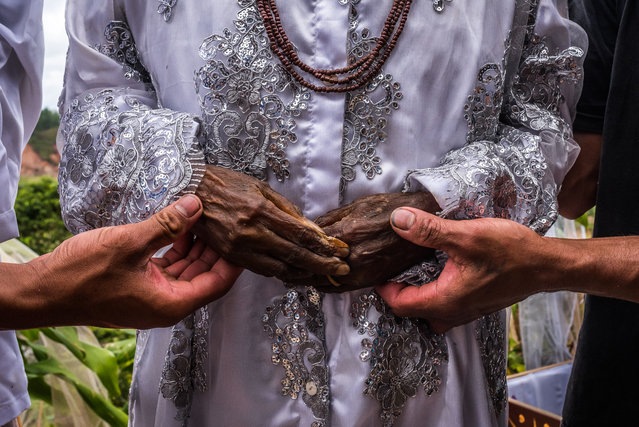
With the bodies having been dutifully cleaned, they are carefully returned to the mausoleum. (Photo by Claudio Sieber Photography/The Guardian)
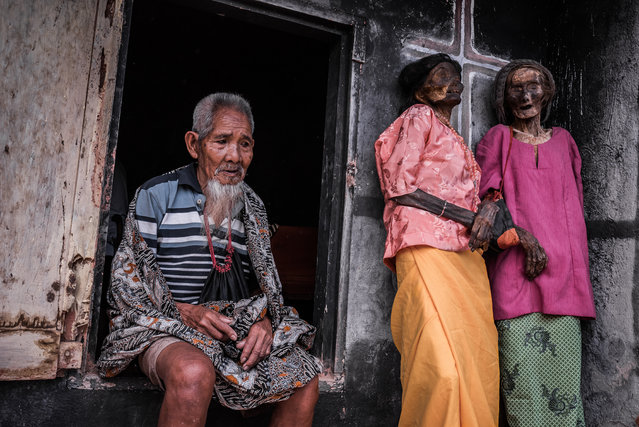
This picture shows Ne Duma Tata waiting to return his deceased wife to the mausoleum. Ludia Rante Bua (right) died in 2010. She stands alongside her sister. (Photo by Claudio Sieber Photography/The Guardian)
14 Oct 2017 09:34:00,
post received
0 comments
